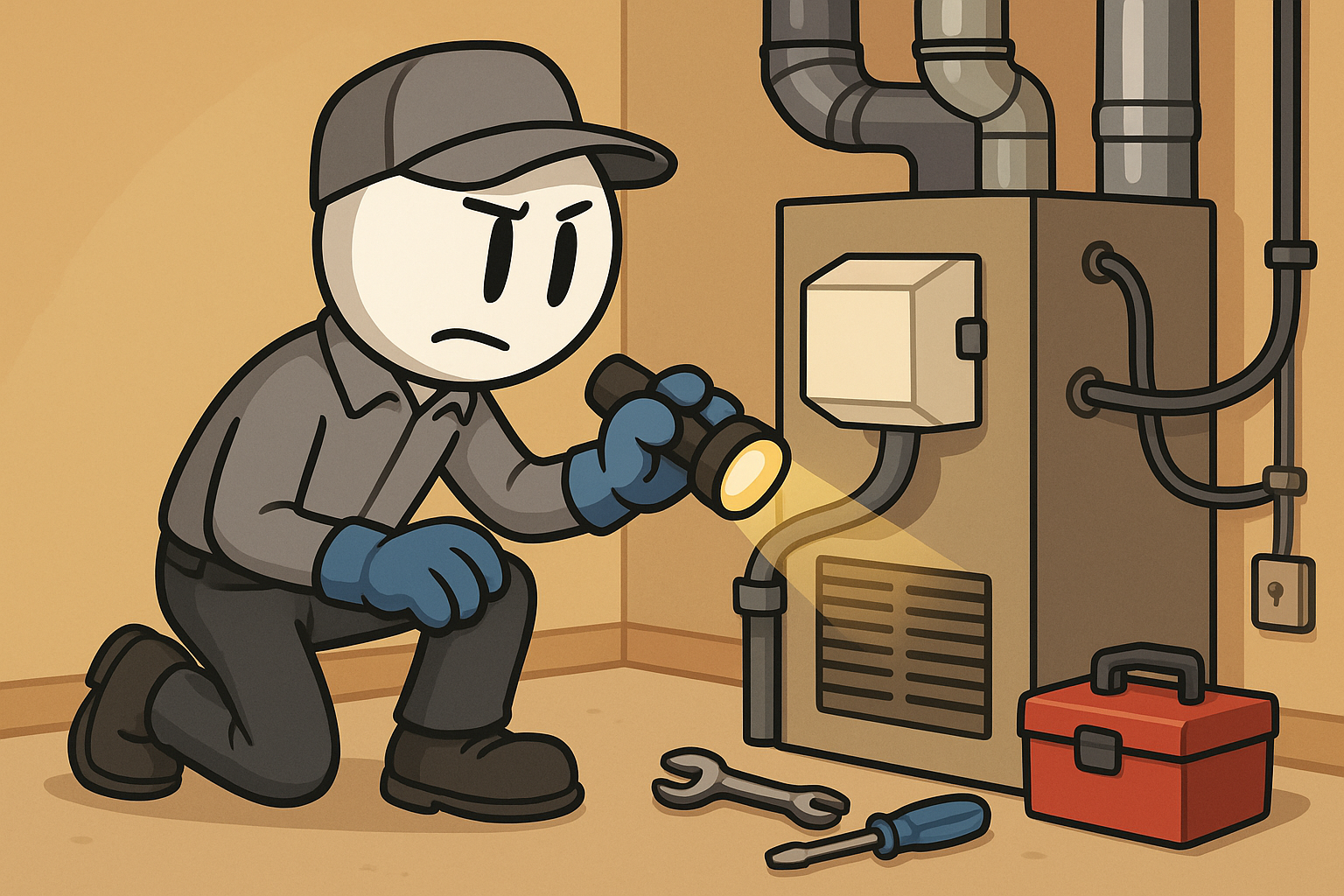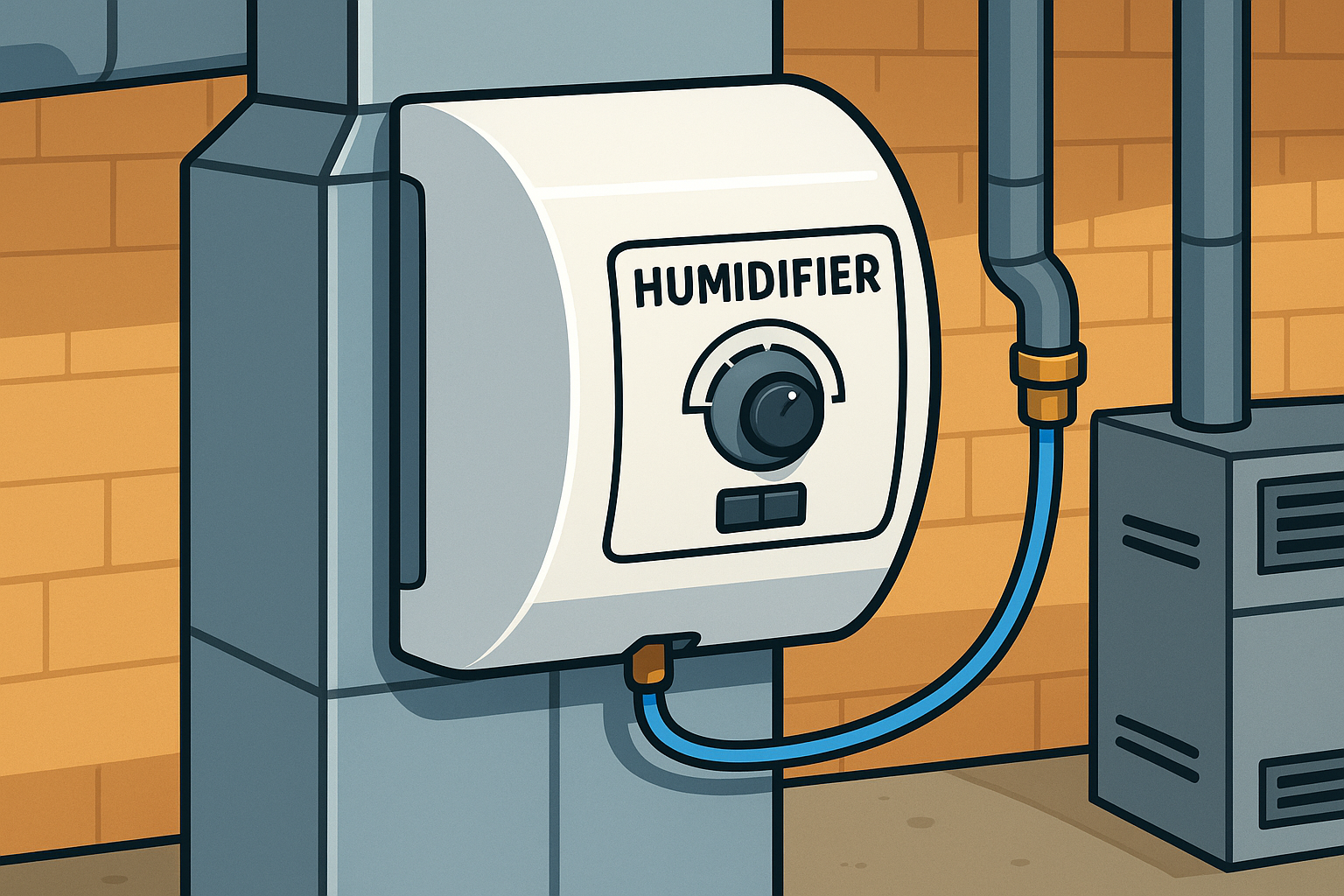Winter Indoor Air Quality Guide for Edmond Homes
Indoor Humidity in Edmond
It’s a chilly January morning in Edmond, and you’ve just turned up the heat. But instead of feeling cozy, you notice static shocks, dry skin, and cracked lips. If that sounds familiar, you’re not alone. Winter indoor humidity in Edmond drops fast once furnaces kick on, creating discomfort and health issues in many homes.
This guide covers why winter air dries out your home, how it impacts your health and energy bills, and what HVAC solutions can help. With tips tailored to Oklahoma’s climate, you’ll know exactly how to fix dry indoor air and stay comfortable all season.
Why Dry Winter Air Is a Big Deal in Edmond
In winter, Edmond’s cold fronts bring in dry air. When heated indoors, that air holds even less moisture, causing indoor humidity levels to drop below 30%, which is drier than the Arizona desert.
According to the EPA, the ideal indoor humidity is between 30% and 50%. Anything lower can lead to:
- Dry skin, eyes, and sinuses
- Increased cold and flu risk
- Cracking wood floors and furniture
- Static shocks and dry air discomfort
- Higher energy bills (dry air feels colder)
A KOCO 5 meteorologist warned that “dry Oklahoma air, combined with home heating, makes the air inside even drier — a recipe for asthma, dry skin, and nosebleeds.” Edmond residents often experience all of the above from late November through February.
How to Fix Dry Indoor Air: Expert HVAC Insights
Why Is My House So Dry in Winter?
Cold air from outdoors carries little moisture. Once it enters your home and gets heated, the relative humidity drops sharply — often to 15% or less.
Example: 40°F air at 100% RH becomes ~30% RH when heated to 75°F indoors.
What’s the Right Humidity Level in Winter?
The EPA and Mayo Clinic recommend 30–50% indoor humidity. For Edmond winters, aim for 30–40% to avoid condensation on windows.
Tip: If you see moisture on your windows, you’ve likely exceeded the safe humidity limit.
Common Problems from Low Humidity
- Health Issues: Dry nasal passages, sore throats, frequent colds
- Home Damage: Cracks in wood, gaps in flooring, warped musical instruments
- Comfort Concerns: Itchiness, static shocks, and feeling cold even when it’s warm
Is a Humidifier Worth It in Edmond?
Yes — especially if you run a gas furnace. A whole-home humidifier can automatically maintain ideal moisture levels throughout your house. Portable units work, too, but require more upkeep.
FAQs:
- Q: Does adding humidity really help you feel warmer?
A: Yes. Moist air retains heat better, so your home feels warmer at lower temps, saving energy. - Q: Will too much humidity cause mold?
A: Only if you exceed 50–60% RH. Stay within the 30–40% range in cold weather.
What Edmond Homeowners Can Do This Winter
Here’s how to quickly improve winter indoor air quality:
- Install a Whole-Home Humidifier: Automatically adds moisture into ductwork
- Use a Hygrometer: Monitor humidity (ideal: 30–40%)
- Seal Leaks and Weatherstrip: Keeps out cold, dry air
- Lower Thermostat 1–2 Degrees: Moist air feels warmer — saves energy
- Use Safe DIY Moisture Tricks:
- Air-dry laundry indoors
- Boil water or soup on stovetop
- Leave bathroom doors open post-shower
Pro Tip: Avoid running exhaust fans too long — they suck out humid air. Turn them off 20 minutes after use.
Why It Matters for Edmond Homes
Edmond’s winters are drier than they appear — cold fronts drop RH fast, and gas furnaces dry the air even further. Residents in neighborhoods like Coffee Creek and Fairfax often report:
- Constant static electricity
- Dry hardwood floors separating in winter
- More frequent colds and coughs in kids
Unlike summer, when Oklahoma fights humidity, winter is all about adding it back in. Local HVAC professionals understand these seasonal shifts. That’s why many Edmond homeowners now install humidity-control systems for year-round comfort.
Ready to breathe easier this winter? Our team offers whole-home humidifier installation, indoor air assessments, and winter HVAC tune-ups.
Conclusion
- Edmond winters bring very dry indoor air — often <30% data-preserve-html-node="true" data-preserve-html-node="true" RH
- Low humidity causes health problems, higher bills, and home damage
- Ideal indoor humidity is 30–40% in winter for health and comfort
- Whole-home humidifiers and small changes can make a big difference
Don’t wait until static shocks and dry skin drive you crazy. Get ahead of the problem and bring balance back to your indoor air.
Written by A&T Mechanical | Updated November 2025





